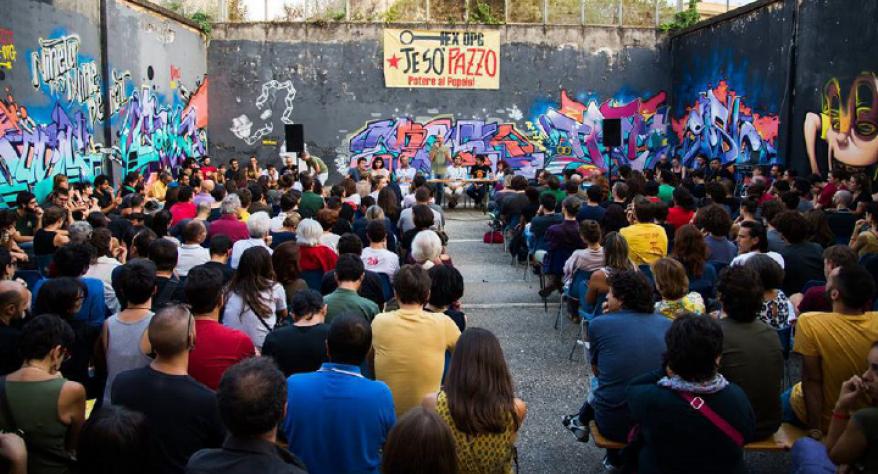REGULATION OF CIVIC USE OF URBAN COMMONS/COMMON GOODS, NAPLES, ITALY

PROJECT DESCRIPTION
Tool (legal framework) to regulate the reuse and management of vacant public buildings considered as “common goods” through bottom up initiatives.
Mainstreaming
When a vacant building is or starts being used informally by the local community for social, political or cultural purposes and is recognized by the local Naples’s government as a “common good”, a regulation for its “civic use” is elaborated by the local community itself through a participatory process and is adopted by the local government. The regulation defines the rights, duties and responsibilities for using the particular vacant building as common good. The regulation defines i.e. the self-management structures, the involvement process, guarantees of public access and collective use, principles of cooperation and co-management, financial resources for the management of the site, integration of sustainability principles in the management of the site. Based on this regulation, the initiative is officially allowed to use the building complex. This tool is part of the “governance ad hoc” that the city of Naples has been setting up since 2012 to experiment innovative forms of bottom-up management of the urban commons.
A pilot regulation was experimented for the bottom-up management of the “ex Asilo Filangieri” and was extended to further 7 building complexes recognized as ‘common goods’ in Naples, all belonging to the historical heritage of the city and occupied in recent years by different citizens’ movements reclaiming space for self-managed socio-cultural activities.
LESSONS LEARNED / RESULTS
Each regulation should be officially adopted by the local administration and government.
As each building complex, identified by the community as ‘common good’, has specific characteristics, each regulation should be unique and strictly connected to the local context and community it belongs to.
The rules to experiment innovative forms of use and management of a building complex should be defined by the local community developing it through a participatory process.
DATA
City information
Population size: 501 th - 1 mPopulation development dynamics within the city administrative limits (at the time of the project): Shrinking
Population development dynamics of the functional urban area (at the time of the project): Shrinking
Website of the city: http://www.comune.napoli.it
Project information
Project territorial scale:
Municipality (city/town/suburb)Project geographical area: City centre
Project/building proportions: Over 1000 sqm; Project Area: No data/not applicable
Project main actors: City Government; Resident association, group, citizens; NGO, Philanthropy
Project dominant property ownership: Public
Project development stage (at the time of description): Completely finished
Project duration: No data/not applicable
Project starting date: 2011-2014



